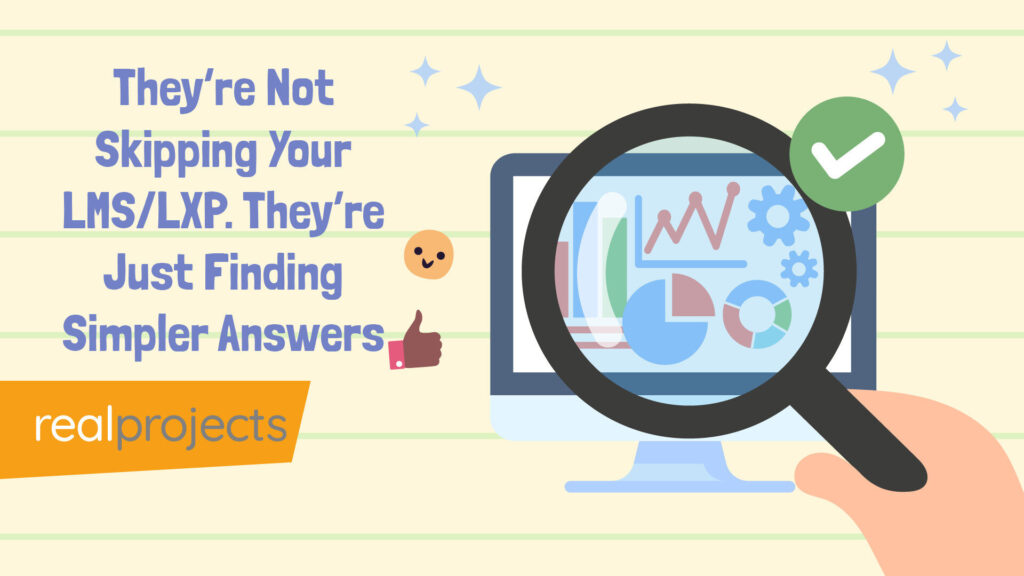Language barriers can be a daily risk. If employees can’t understand safety instructions or training, the consequences are serious. From injuries to disengagement. Yet many workplaces still assume everyone speaks and reads the same language.
The basics:
- $2 billion lost annually by U.S. businesses due to language issues
- 1 in 4 workplace safety incidents involve a language barrier
- 67+ million U.S. residents speak a non-English language at home
- By 2050, the U.S. could be the world’s largest Spanish-speaking country
- Translation alone isn’t enough. Human review and cultural context matter
Poor translation hurts productivity, safety, and inclusion. It blocks career progress and disconnects teams.
But when language support is done well, engagement and collaboration improve. The chances of misunderstanding drop.
AI can support translation, but it’s not foolproof. Without human oversight, you risk confusing or culturally insensitive content.
Ideas to try:
- Match training to job-specific language levels
- Involve native speakers in quality control
- Pilot content with real users before rollout
- Work with local language and literacy programs
What Happens When Your Team Can’t Understand Each Other?
Starting a new job is tough enough. But imagine not understanding the safety signs or training materials.
Not because you lack skills, but because they’re in a language you don’t speak.
It’s not just inconvenient. It can affect safety, confidence, and performance. And for many people in global workplaces, it’s an everyday challenge.
Here’s why this deserves more attention.
Over 350 languages are spoken in the United States
The U.S. Census Bureau reports more than 350 languages spoken at home across the country, with some estimates suggesting up to 430 languages.
Source: U.S. Census Bureau (2020)
67.8 million people speak a language other than English at home
This represents about 21.6% of the U.S. population aged 5 and older.
Source: U.S. Census Bureau, American Community Survey (2019)
13.2% of U.S. residents speak Spanish at home
Spanish is by far the most commonly spoken non-English language in the U.S.
Source: U.S. Census Bureau (2019)
The U.S. is projected to be the largest Spanish-speaking country by 2050
Forecasts suggest the U.S. may surpass Mexico in total Spanish speakers, due to demographic growth and bilingual populations.
Source: Instituto Cervantes (2015); Pew Research Center
1 in 3 U.S. residents could speak Spanish by 2050
Projections estimate that around 132 million U.S. residents will be Spanish speakers by mid-century.
Source: Instituto Cervantes; Pew Research Center
The Cost of Misunderstanding Is Higher Than You Think
In the U.S. alone, businesses lose an estimated $2 billion each year due to language barriers.
One in four workplace safety incidents involves language as a contributing factor. But this issue goes beyond numbers. It’s about inclusion, motivation, and enabling people to do their best work.
Why Translation Isn’t Always Enough
Translating your training materials is an important step, but it’s not always enough. Companies need to support this with additional programmes.
Some employees may speak the language fluently but struggle with reading or writing it.
That’s often the case for “heritage speakers” who grew up hearing the language but were educated in another. So even well-translated content can still create barriers, especially in high-risk environments where clear understanding is essential.
Scott Hewitt asks:
“Translated content is essential for global L&D teams because it ensures everyone can access training in their native language. But how often do we check if that translation truly supports learning on the ground?”
What Are Companies Doing About It?
Smart organisations are tackling this in creative ways:
- Language ambassador programmes: Multilingual employees are matched with colleagues during training to provide real-time support.
- Colour-coded environments: One organisation used different coloured walls to signal areas like exits or stairwells.
- Bringing in local literacy programmes: Some companies bring college-led English classes directly into their buildings so employees can take part during paid work hours.
- Hiring bilingual specialists: These staff help translate training and support internal communication.
One company even mapped out job roles against English proficiency levels before rolling out language training. Not to exclude people, but to build a clear pathway for upskilling.
Scott Hewitt shares:
“In one project, we created multilingual elearning content for employees in the oil and gas sector to tackle crucial safety topics like ‘dropped objects.’ The risk of serious injury on-site meant content had to be clearly understood across different languages. Translating this accurately enabled field teams to grasp critical safety protocols quickly, protecting lives and preventing costly accidents.”
Where AI Fits and Where It Doesn’t
Tools like Language Line (on-demand phone interpretation) are already widely used.
Others are exploring AI-based options, like headphone-based live translation tools, to bridge gaps in real time. But these raise concerns too, especially around data privacy and accuracy.
At a recent conference we shared how AI tools struggle with tenses, tone, or formality. Mixing up casual and formal speech, or mispronouncing words. At Real Projects our translation team provides a vital human loop, ensuring quality translation in our course content.
We’ve had to manually tweak AI output for both pronunciation and subtitles to make it work. The lesson? AI is useful for heavy lifting, but human review is still essential.
Scott Hewitt asks:
“You can’t just press translate and rely on AI. So how do you build a process where humans and machines work together to deliver content that’s both technically accurate and culturally resonant?”
Real People. Real Impact.
It’s not just about performance reviews or KPIs.
For many employees, learning a language supports more than just work. It helps them navigate daily life, from managing healthcare to handling local services.
It’s about creating a working environment where everyone can participate fully, contribute effectively, and build long-term confidence.
Scott Hewitt suggests:
“Be specific about key terminology, build time for cultural adaptation into the schedule, and run pilot tests with actual users in each language. That’s how you make content accurate, relevant and useful.”
So What Can You Do?
Here are a few starting points:
- Audit your current training and signage. What languages are they in? Who’s being left out? You need a review process.
- Build pathways, not roadblocks. Can you partner with local colleges or literacy groups?
- Test AI tools in small pilots before scaling. Involve native speakers in the review.
- Think cultural, not just linguistic. Non-verbal cues matter too, like pointing, eye contact, or silence.
- Don’t aim for perfection. Aim for understanding.
Q&A: Translation and Language Learning
Q: Why is translation important in language learning?
A: Translation helps connect new words to what we already know. It supports understanding, builds confidence, and makes learning faster. Without it, learners can feel lost, especially when learning complex ideas or instructions.
Q: What is the importance of content translation?
A: Translated content allows everyone to access the same information, no matter what language they speak. It helps teams learn, stay safe, and feel included, especially in global workplaces with many native languages.
Q: What is the role of translation in development?
A: Translation supports learning, health, and safety in growing organisations and communities. It lets people access key services, training, and information. This boosts confidence, performance, and progress for both individuals and businesses.
Q: Why is the translation method important?
A: A good method makes translations clear and useful. It also respects culture and literacy levels. The right approach means people truly understand the content, not just read it, which is key for safety and success.



